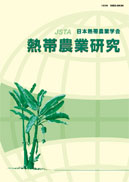Volume 11, Issue 2
Displaying 1-9 of 9 articles from this issue
- |<
- <
- 1
- >
- >|
Original Article
-
2018Volume 11Issue 2 Pages 43-52
Published: 2018
Released on J-STAGE: August 20, 2019
Download PDF (621K) -
2018Volume 11Issue 2 Pages 53-59
Published: 2018
Released on J-STAGE: August 20, 2019
Download PDF (825K)
Information
-
2018Volume 11Issue 2 Pages 60-72
Published: 2018
Released on J-STAGE: August 20, 2019
Download PDF (860K)
Symposium
-
2018Volume 11Issue 2 Pages 73
Published: 2018
Released on J-STAGE: August 20, 2019
Download PDF (169K) -
2018Volume 11Issue 2 Pages 74-78
Published: 2018
Released on J-STAGE: August 20, 2019
Download PDF (504K) -
2018Volume 11Issue 2 Pages 79-80
Published: 2018
Released on J-STAGE: August 20, 2019
Download PDF (298K) -
2018Volume 11Issue 2 Pages 81-83
Published: 2018
Released on J-STAGE: August 20, 2019
Download PDF (342K) -
2018Volume 11Issue 2 Pages 84-85
Published: 2018
Released on J-STAGE: August 20, 2019
Download PDF (557K) -
2018Volume 11Issue 2 Pages 86-87
Published: 2018
Released on J-STAGE: August 20, 2019
Download PDF (181K)
- |<
- <
- 1
- >
- >|
